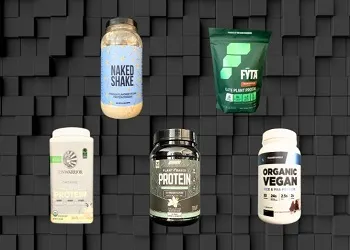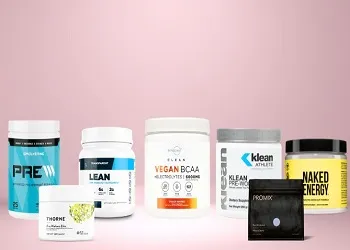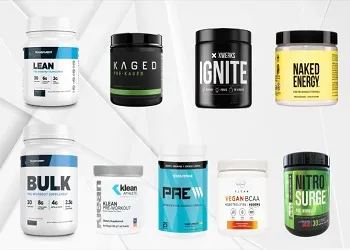Glutamine is a nonessential amino acid, but that doesn’t mean it’s not important. Glutamine is crucial for digestive and immune health, as well as muscle recovery. Including this important amino acid in your diet regularly is key to optimizing your digestion, keeping your immune system running, and maximizing your athletic performance.
We know glutamine is important, but which foods contain glutamine? In this article, we dive into what glutamine is, why it’s important, and glutamine-rich foods so you can make sure you are getting the glutamine you need.
Table of Contents
Short Summary
- L-glutamine is a nonessential but important amino acid that is needed for digestive, immune, and muscle health, among other functions within the human body.
- L-glutamine in food mainly comes from glutamine-rich foods including fish and seafood, dairy, meat, eggs, beans, tofu, dark, leafy greens, red cabbage, nuts, and seeds.
- L-glutamine supplements are available as individual L-glutamine, general amino acid supplements, and whey protein supplements, all of which will boost L-glutamine intake.
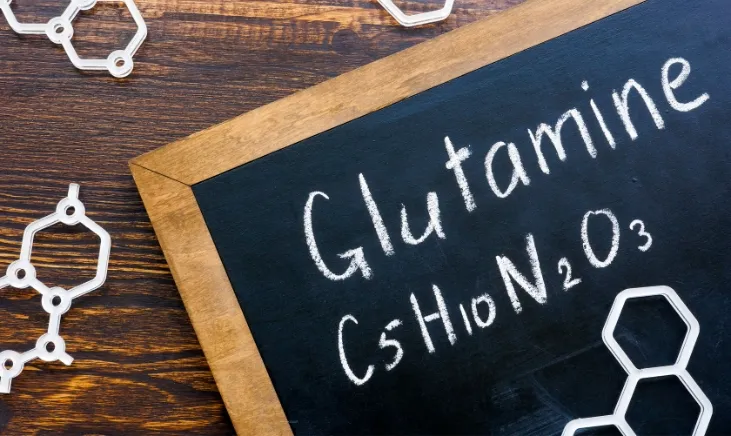
What Is L-Glutamine?
Glutamine is a nonessential amino acid. In fact, it’s the most abundant amino acid found in the human body and is required for many processes that lead to optimal health.
Glutamine vs. L-Glutamine
Glutamine is an amino acid with two forms: L-glutamine and D-glutamine. L-glutamine is the form of glutamine found in food and supplements. For the purposes of this article and in general, glutamine and L-glutamine can and will be used interchangeably.
Benefits of Glutamine: The Most Abundant Amino Acid
Consuming glutamine-rich foods is important to ensure we are getting the amino acids we need daily. Some glutamine benefits include:
- Athletic performance: Glutamine is important for the health of our muscles, which links it to athletic performance. One study found glutamine helped to improve muscle recovery and decrease muscle soreness. Another study found it helped to decrease muscle damage associated with exercise.
- Digestive health: Glutamine plays a few roles in digestive tract and gut health. First, one study found it to be beneficial in treating irritable bowel syndrome (IBS) when used in conjunction with dietary changes. Experts are also studying its role in inflammatory bowel disease (IBD). Research has also supported its use in treating leaky gut syndrome. Other studies have confirmed its benefits for the general health of the gut and microbiome.
- Immune health: Glutamine is also necessary for a healthy immune system and even more critical to individuals with severe illness and critically ill patients. Research has shown many positive immune system benefits from glutamine supplementation.
How Much Glutamine Do We Need Each Day?
The average glutamine intake is generally somewhere between 3 and 6 grams daily. High glutamine foods, as well as glutamine powder and other supplements, can help you achieve your daily needs easily.
Who Should Consume Glutamine-Rich Foods?
As we just discussed, glutamine is beneficial for digestive system health and immune system health. If you are looking to optimize the function of these two systems, glutamine can help.
Additionally, athletes looking to improve muscle recovery can benefit from consuming more glutamine.
In general, most individuals will benefit from eating more foods with glutamine.
Are There Negative Effects of Glutamine?
Excess glutamine intake can cause side effects, which include:
- Constipation
- Nausea
- Headache
- Abdominal pain
- Extremity pain
- Cough
Who Should Avoid Too Much Glutamine?
Some experts suggest avoiding excess glutamine, specifically supplemental glutamine, if you suffer from psychiatric disorders or seizures.
Additionally, some specialists recommend reducing your intake if you are elderly and have kidney or liver disease.
When to Avoid Foods High in Glutamine
The side effects discussed above are associated with taking glutamine supplements in high doses. In general, there are no significant known risks to consuming glutamine-rich foods.

Which Foods Have Glutamine?
Food sources of glutamine include fish and seafood, dairy, meat, eggs, beans, tofu, dark, leafy greens, red cabbage, nuts, and seeds. Let’s dive into each so we can compare their glutamine content.
Fish and Seafood
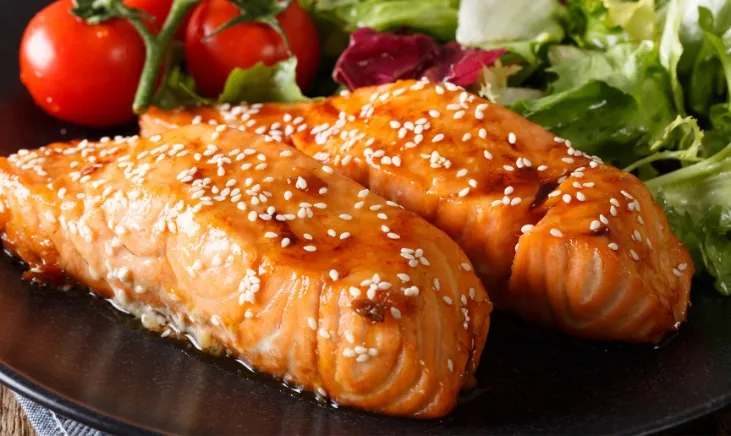
Fish and seafood are one example of foods with L-glutamine.
Milk and Dairy Products
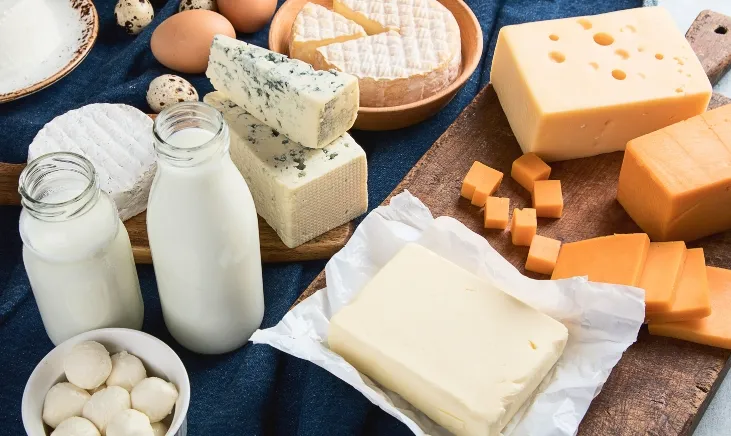
Milk and other dairy foods are healthy glutamine food sources. Some of the best dairy sources of glutamine include:
- Cottage cheese contains 6 grams per cup.
- Ricotta cheese contains 6 grams per cup.
- Yogurt contains 2.6 grams per cup.
- Parmesan cheese contains 2.3 grams per ounce.
- Milk contains 1.8 grams per cup.
- Mozzarella cheese contains 1.3 grams per ounce.
- Cheddar cheese 1.3 grams per ounce.
Grass-Fed Meat

Meat is another category of foods rich in glutamine. Some glutamine rich meats include:
- Pork contains 4.8 grams in each four-ounce serving.
- Poultry (chicken) contains 4.5 grams in each four-ounce serving.
- Organ meats (beef liver) contain 3 grams in each four-ounce serving.
- Beef contains 2.9 grams in each four-ounce serving.
Eggs
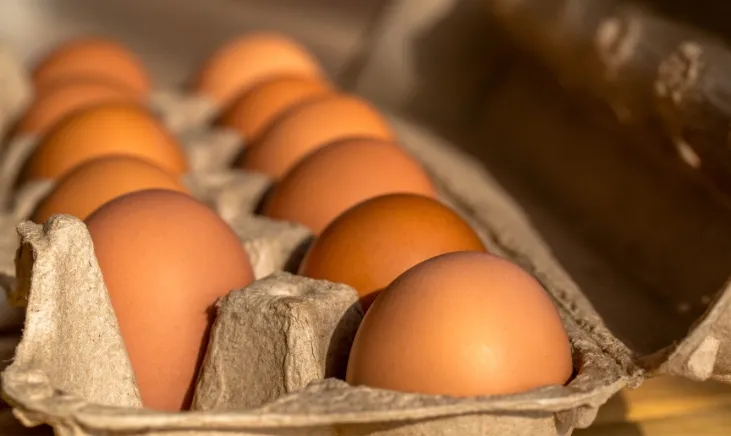
Eggs are high in protein so, are eggs high in glutamine? Yes, eggs are another food with glutamine that can help you meet your daily needs.
Each large egg contains 0.8 grams of glutamine so consuming three eggs would provide 2.4 grams of glutamine.
Red Kidney Beans
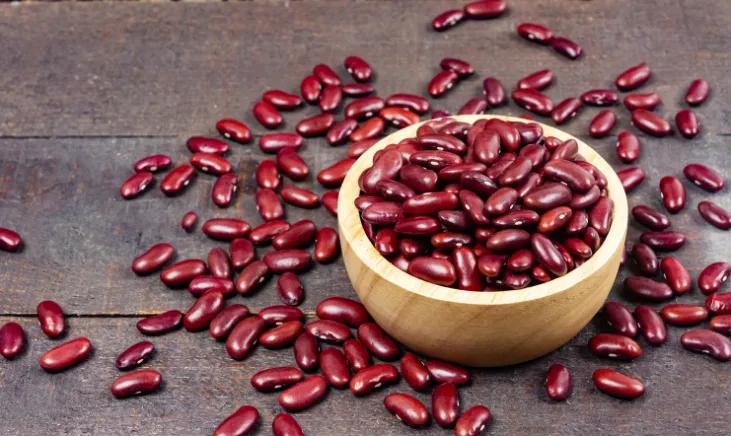
Red kidney beans are a vegan-friendly food rich in glutamine. Each cup of kidney beans contains 6.6 grams of glutamine.
Other beans and lentils are also high glutamine food sources. Some examples and their glutamine levels include:
- Chickpeas contain 7.2 grams per cup.
- Lentils contain 2.8 grams per cup.
- Black beans contain 2.3 grams per cup.
Tofu
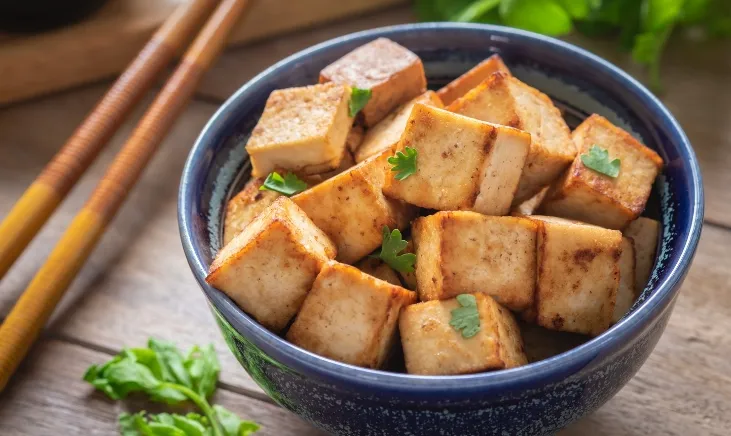
Tofu is another great plant-based source of glutamine. Tofu contains 2.1 grams of glutamine per cup.
Dark Leafy Greens

As far as vegetables go, dark, leafy greens are some of the best plant foods rich in L-glutamine. Some examples include:
- Spinach contains 0.3 grams per 100 gram serving.
- Kale contains 0.3 grams per 100 gram serving.
- Parsley contains 0.2 grams per 100 gram serving.
Red Cabbage
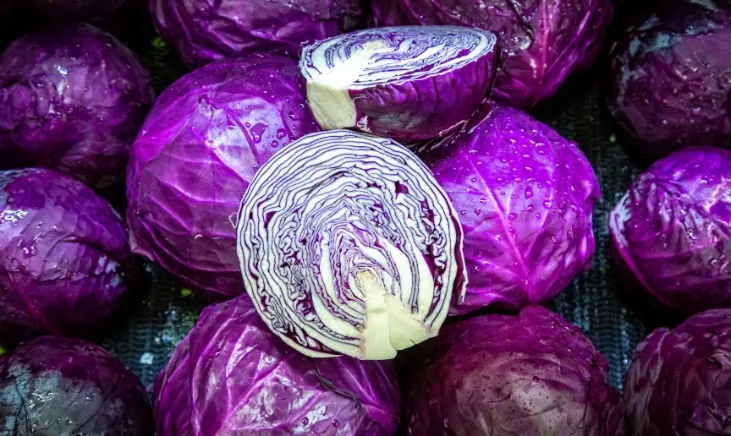
Red cabbage is a great plant source of glutamine. Red cabbage contains 0.3 grams of glutamine per 100 gram serving.
Red beets are also a great option with 0.4 grams per 100 gram serving.
Nuts and Seeds

Nuts and seeds are all also foods high in L-glutamine. Some examples and their glutamine levels include:
- Almonds contain 8.9 grams per cup.
- Pumpkin seeds contain 8 grams per cup.
- Peanuts contain 7.9 grams per cup.
- Sunflower seeds contain 7.8 grams per cup.
- Cashews contain 5.8 grams per cup.
- Pistachios contain 5.3 grams per cup.
- Walnuts contain 2.8 grams per cup.

Glutamine Supplements
Glutamine supplements are available for individuals who do not consume enough foods that contain L-glutamine.
Additionally, whey protein supplements are high in glutamine and can meet your glutamine needs, as well as your needs for all amino acids. General amino acid supplements are a third option to boost your intake of glutamine and all amino acids.
However, the vast majority of individuals get more glutamine than they need through foods high in glutamine and do not need glutamine supplements.
Who Might Need Glutamine Supplements?
As we discussed previously, glutamine is needed for digestive and immune health. If you struggle with digestive issues or immune system conditions and are not getting adequate glutamine, you may benefit from a glutamine supplement in addition to consuming foods that contain glutamine.
However, it is important to discuss glutamine supplementation with your doctor, registered dietitian, or other healthcare provider.
Summary
Foods with L-glutamine are everywhere, so getting adequate glutamine daily is not difficult. However, if you are looking to boost your glutamine intake, focusing on glutamine food sources can help you do so.
To recap which foods are high in glutamine, here is a quick list:
- Fish and seafood
- Milk and dairy
- Meat
- Eggs
- Beans
- Tofu
- Dark, leafy greens
- Red cabbage
- Nuts and seeds
Glutamine supplements, whey protein (milk protein), and general amino acid supplements are other ways to up your glutamine intake easily.
However, as a registered dietitian I recommend a “food first” approach where glutamine-rich foods and a high protein diet are your first priority and L-glutamine supplementation is your back-up plan.
Frequently Asked Questions
Is L-glutamine vegan? Which plants are rich in L-glutamine?
Yes, glutamine itself is just an amino acid, which is inherently vegan.
While many animal foods are sources of glutamine, there are also many vegan sources of this amino acid and other amino acids. Plant-based foods that are also glutamine sources include beans, tofu, dark leafy greens, red cabbage, and nuts and seeds.
Do bananas have L-glutamine?
Bananas do contain some glutamine with about 0.2 grams in each large banana.
Can you put L-glutamine or other amino acids in coffee?
If you’re looking for an easy way to add more glutamine into your routine, you may be wondering, can I put L-glutamine in my coffee?
Unfortunately, the answer is no. The high temperature of coffee and other hot beverages can denature the protein and decrease the effectiveness of the amino acids.
For the best results, only add glutamine or amino acids to cold or room-temperature beverages.
What is the best form of L-glutamine? Is L-glutamine powder better than capsules?
While either a capsule or a powder glutamine supplement will be an effective supplement form of glutamine to boost glutamine levels, a powdered glutamine supplement is generally able to be absorbed quicker and easier than a capsule.






